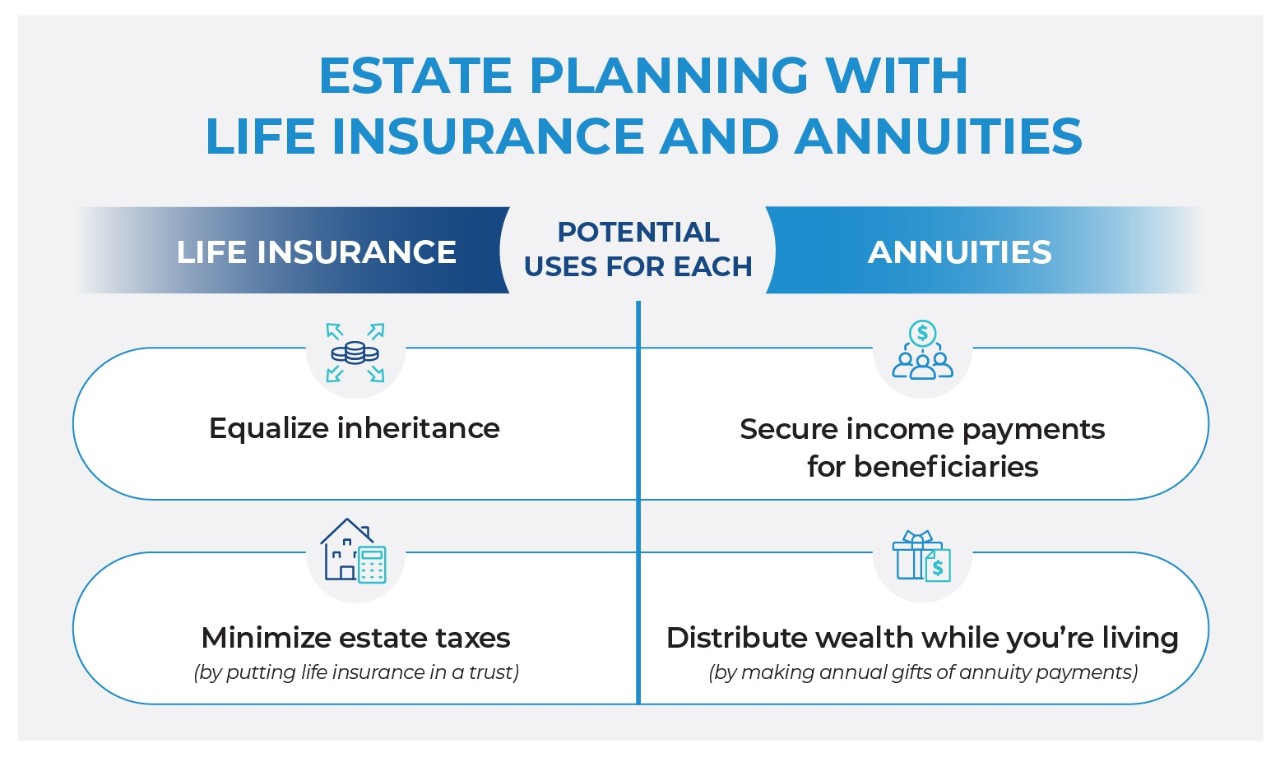All Categories
Featured
Table of Contents

Recognizing the various death advantage choices within your inherited annuity is vital. Meticulously evaluate the contract information or consult with a monetary advisor to identify the particular terms and the very best means to continue with your inheritance. Once you inherit an annuity, you have a number of options for obtaining the cash.
Sometimes, you could be able to roll the annuity into an unique type of individual retirement account (IRA). You can select to receive the entire continuing to be balance of the annuity in a single repayment. This option offers prompt accessibility to the funds yet features significant tax effects.

If the inherited annuity is a competent annuity (that is, it's held within a tax-advantaged retired life account), you could be able to roll it over right into a brand-new retirement account. You do not require to pay tax obligations on the surrendered amount. Beneficiaries can roll funds into an acquired individual retirement account, a special account particularly designed to hold assets acquired from a retirement plan.
Inherited Guaranteed Annuities tax liability
Various other kinds of beneficiaries normally should withdraw all the funds within ten years of the owner's fatality. While you can not make extra payments to the account, an acquired IRA uses a valuable benefit: Tax-deferred growth. Revenues within the acquired individual retirement account accumulate tax-free up until you start taking withdrawals. When you do take withdrawals, you'll report annuity income similarly the strategy participant would certainly have reported it, according to the internal revenue service.
This choice supplies a stable stream of revenue, which can be useful for lasting monetary preparation. There are various payout choices available. Typically, you must start taking distributions no greater than one year after the proprietor's death. The minimum amount you're required to withdraw each year afterwards will certainly be based upon your very own life span.

As a beneficiary, you won't go through the 10 percent IRS very early withdrawal penalty if you're under age 59. Trying to calculate taxes on an acquired annuity can feel intricate, but the core principle focuses on whether the contributed funds were formerly taxed.: These annuities are funded with after-tax bucks, so the beneficiary generally does not owe tax obligations on the original contributions, yet any kind of earnings accumulated within the account that are dispersed are subject to average earnings tax.
How are Period Certain Annuities taxed when inherited
There are exemptions for spouses who acquire certified annuities. They can generally roll the funds right into their very own individual retirement account and defer tax obligations on future withdrawals. Either method, at the end of the year the annuity company will certainly file a Kind 1099-R that demonstrates how much, if any type of, of that tax year's circulation is taxable.
These taxes target the deceased's complete estate, not simply the annuity. These taxes normally only effect really large estates, so for many successors, the focus needs to be on the revenue tax obligation ramifications of the annuity.
Annuity Cash Value and beneficiary tax considerations
Tax Obligation Therapy Upon Death The tax obligation treatment of an annuity's fatality and survivor benefits is can be rather complicated. Upon a contractholder's (or annuitant's) fatality, the annuity might go through both revenue tax and estate tax obligations. There are various tax obligation treatments depending on that the recipient is, whether the owner annuitized the account, the payment approach selected by the recipient, etc.
Estate Taxes The government inheritance tax is a very modern tax obligation (there are several tax braces, each with a greater price) with prices as high as 55% for really big estates. Upon fatality, the internal revenue service will certainly include all residential or commercial property over which the decedent had control at the time of death.
Any kind of tax over of the unified debt schedules and payable 9 months after the decedent's death. The unified credit score will fully sanctuary relatively moderate estates from this tax obligation. For lots of customers, estate taxes may not be a crucial issue. For bigger estates, nonetheless, estate taxes can enforce a big problem.
This conversation will concentrate on the estate tax therapy of annuities. As held true throughout the contractholder's lifetime, the internal revenue service makes an essential difference between annuities held by a decedent that are in the buildup stage and those that have gotten in the annuity (or payout) stage. If the annuity is in the buildup stage, i.e., the decedent has not yet annuitized the agreement; the complete fatality benefit guaranteed by the contract (consisting of any kind of enhanced survivor benefit) will be included in the taxable estate.
Tax on Annuity Income Stream death benefits for beneficiaries
Example 1: Dorothy had a dealt with annuity contract released by ABC Annuity Company at the time of her death. When she annuitized the contract twelve years earlier, she selected a life annuity with 15-year duration certain.

That worth will be included in Dorothy's estate for tax purposes. Assume rather, that Dorothy annuitized this agreement 18 years ago. At the time of her fatality she had outlasted the 15-year duration particular. Upon her death, the repayments quit-- there is nothing to be paid to Ron, so there is absolutely nothing to include in her estate.
Two years ago he annuitized the account selecting a life time with cash reimbursement payout option, calling his child Cindy as beneficiary. At the time of his fatality, there was $40,000 principal remaining in the agreement. XYZ will pay Cindy the $40,000 and Ed's executor will consist of that quantity on Ed's estate tax obligation return.
Considering That Geraldine and Miles were married, the benefits payable to Geraldine stand for building passing to an enduring partner. Annuity cash value. The estate will certainly have the ability to utilize the endless marriage reduction to avoid taxes of these annuity benefits (the worth of the advantages will be detailed on the estate tax obligation form, in addition to a countering marriage deduction)
How are beneficiaries taxed on Variable Annuities
In this situation, Miles' estate would consist of the value of the remaining annuity repayments, yet there would be no marriage reduction to balance out that incorporation. The same would use if this were Gerald and Miles, a same-sex pair. Please keep in mind that the annuity's continuing to be value is identified at the time of fatality.

Annuity contracts can be either "annuitant-driven" or "owner-driven". These terms describe whose fatality will certainly trigger payment of survivor benefit. if the contract pays survivor benefit upon the fatality of the annuitant, it is an annuitant-driven contract. If the survivor benefit is payable upon the death of the contractholder, it is an owner-driven agreement.
There are scenarios in which one person owns the contract, and the determining life (the annuitant) is somebody else. It would certainly be wonderful to believe that a particular contract is either owner-driven or annuitant-driven, however it is not that basic. All annuity contracts provided since January 18, 1985 are owner-driven since no annuity contracts issued ever since will certainly be provided tax-deferred standing unless it contains language that causes a payout upon the contractholder's death.
Latest Posts
Tax rules for inherited Annuity Fees
Are inherited Annuity Beneficiary taxable income
Taxes on Annuity Contracts inheritance